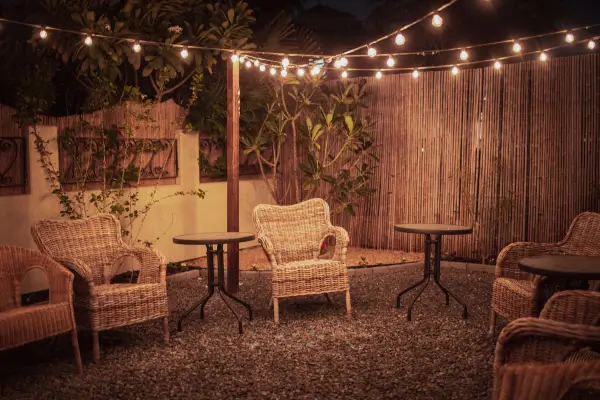Book and notebook covers offer more than just protection. They reflect your personality, spark creativity, and can even promote sustainability.
This guide explores creative and eco-friendly ways to personalize book and notebook covers. Each method uses simple tools and recycled or reusable materials.
Whether you’re a student, writer, or crafting lover, these ideas help you stand out while reducing waste.
Let’s explore how to transform ordinary covers into unique, meaningful pieces.
Why Customize Your Covers?
Customizing books and notebooks adds value beyond aesthetics.
It encourages creative thinking and helps organize different types of content visually.
A personalized cover also makes a thoughtful handmade gift for friends or family.
Most importantly, it gives new life to old items, aligning with eco-conscious living.
Materials You Can Use
You don’t need expensive supplies to create something special.
Common household items like fabric scraps, old magazines, and paper bags can become beautiful covers.
Natural elements such as pressed flowers or leaves add a unique organic touch.
Other useful materials include:
- Recycled paper or cardboard
- Biodegradable paints and inks
- Reusable ribbons and cords
- Washable markers or fabric pens
- Eco-friendly adhesives
Using what you already have minimizes waste and keeps costs low.
Method 1: Upcycled Fabric Covers
Fabric is an excellent material for soft, textured notebook covers.
Old clothes, curtains, or tote bags can be repurposed into stylish wraps.
This method works well for both hardcover and spiral-bound notebooks.
Steps:
- Cut fabric slightly larger than the notebook.
- Apply eco-glue or Mod Podge evenly on the cover.
- Press fabric onto the surface and smooth wrinkles.
- Fold edges inward and let dry completely.
Ideas:
- Use denim for a rugged look.
- Layer lace or burlap for texture.
- Try patchwork for a playful design.
Method 2: Natural Pressed Flower Art
Bringing nature indoors is a gentle way to decorate.
Pressed flowers or leaves create elegant, delicate designs.
This technique suits journals, sketchbooks, or reading logs.
Steps:
- Collect flat, thin flowers or leaves.
- Dry them between heavy books for a few days.
- Arrange on the cover and glue carefully.
- Seal with a clear biodegradable varnish.
Ideas:
- Frame each flower with gold leaf accents.
- Create seasonal themes using autumn leaves or spring blossoms.
- Add handwritten notes beneath the petals.
Method 3: Stamped Paper Covers
Patterned paper offers a clean, minimalist approach.
Stamping allows for repeated motifs without complex drawing skills.
Use ink pads made from plant-based dyes for a sustainable option.
Steps:
- Choose a stamp design that reflects your style.
- Position it on the cover and press firmly.
- Lift slowly to avoid smudging.
- Repeat to form borders or full-page patterns.
Ideas:
- Floral stamps for a bohemian feel.
- Geometric shapes for modern simplicity.
- Alphabet sets for custom quotes or names.
Method 4: Collage with Recycled Paper
Magazines, newspapers, and wrapping paper are perfect for collages.
This method is ideal for visual storytelling or mood boards.
Each piece tells a part of your story or inspiration.
Steps:
- Tear or cut paper into desired shapes.
- Glue pieces onto the cover one by one.
- Let dry before sealing with Mod Podge.
- Add metallic details with paint pens if desired.
Ideas:
- Mix travel photos and postcards for a journey-themed journal.
- Combine motivational quotes and illustrations.
- Use vintage sheet music for a musical notebook.
Method 5: Hand-Painted Designs
Painting allows full creative freedom and expression.
Acrylics, watercolors, and even homemade paints work well.
Choose colors that inspire or represent your current mood.
Steps:
- Sketch a light outline if needed.
- Paint directly onto the cover or over paper layers.
- Let dry completely before handling.
- Apply a sealant to protect the finish.
Ideas:
- Abstract splatter patterns for energy and fun.
- Ombre gradients using sponges.
- Minimalist line art with a single brush stroke.
Method 6: Braided Cord Wraps
For a tactile and functional approach, try wrapping covers in cords.
Jute, hemp, or leftover yarn from other projects are great choices.
This method is especially good for spiral notebooks or planners.
Steps:
- Wrap cord tightly around the cover.
- Secure ends with small knots or eco-glue.
- Leave space for writing or future additions.
Ideas:
- Alternate colored cords for striped effects.
- Add beads between sections for decoration.
- Use leather tabs for a professional finish.
Method 7: Eco-Friendly Vinyl Decals
If you own a Cricut or Silhouette machine, try eco-vinyl decals.
These are durable, customizable, and easy to apply.
They’re perfect for minimalist or letter-based designs.
Steps:
- Design your decal digitally.
- Cut with a cutting machine.
- Weeding excess vinyl carefully.
- Apply to the cover using transfer tape.
Ideas:
- Initials or favorite quotes in modern fonts.
- Nature-inspired icons like trees or mountains.
- Custom planner labels for bullet journals.
Tips for Long-Lasting Results
To ensure your personalized cover lasts, choose quality sealants.
Avoid harsh chemicals—opt for plant-based sealers instead.
Store decorated notebooks in dry places away from direct sunlight.
Test materials on scrap paper before applying to the final cover.
Keep your workspace clean and organized to prevent mistakes.
Final Thoughts
Personalizing book and notebook covers blends creativity with sustainability.
By reusing materials and exploring different techniques, you can make every item uniquely yours.
Try combining methods for layered, meaningful designs.
The key is to enjoy the process and let your imagination lead the way.
Start today and see how a simple cover becomes a canvas for self-expression.



